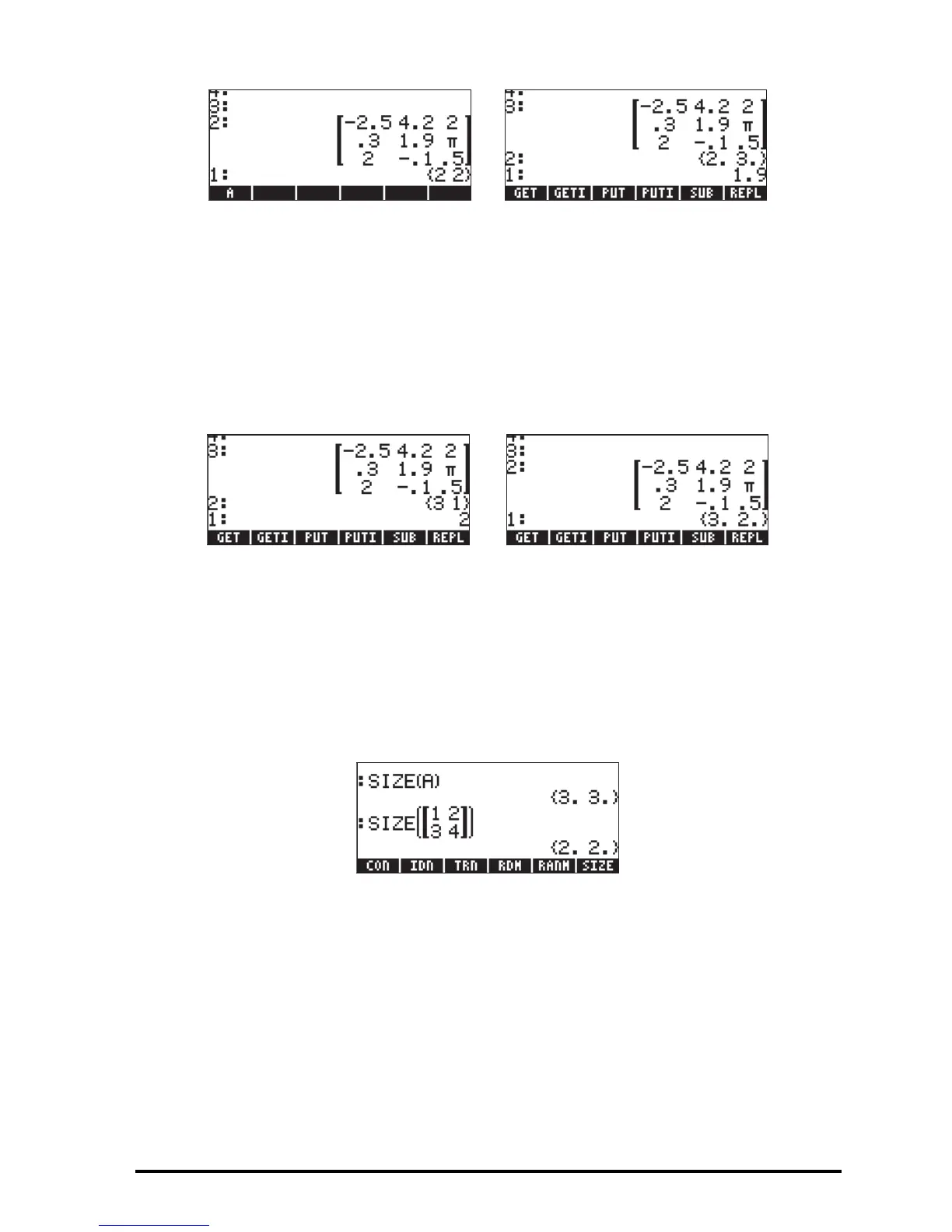Page 10-7
Notice that the screen is prepared for a subsequent application of GETI or GET,
by increasing the column index of the original reference by 1, (i.e., from {2,2}
to {2,3}), while showing the extracted value, namely A(2,2) = 1.9, in stack level
1.
Now, suppose that you want to insert the value 2 in element {3 1} using PUTI.
Still in RPN mode, try the following keystrokes: ƒ ƒ{3 1} ` 2 `
PUTI. The screen shots below show the RPN stack before and after the
application of function PUTI:
In this case, the 2 was replaced in position {3 1}, i.e., now A(3,1) = 2, and the
index list was increased by 1 (by column first), i.e., from {3,1} to {3,2}. The
matrix is in level 2, and the incremented index list is in level 1.
Function SIZE
Function SIZE provides a list showing the number of rows and columns of the
matrix in stack level 1. The following screen shows a couple of applications of
function SIZE in ALG mode:
In RPN mode, these exercises are performed by using @@@A@@@ SIZE, and
[[1,2],[3,4]] ` SIZE .
Function TRN
Function TRN is used to produce the transconjugate of a matrix, i.e., the
transpose (TRAN) followed by its complex conjugate (CONJ). For example, the
following screen shot shows the original matrix in variable A and its transpose,
shown in small font display (see Chapter 1):

